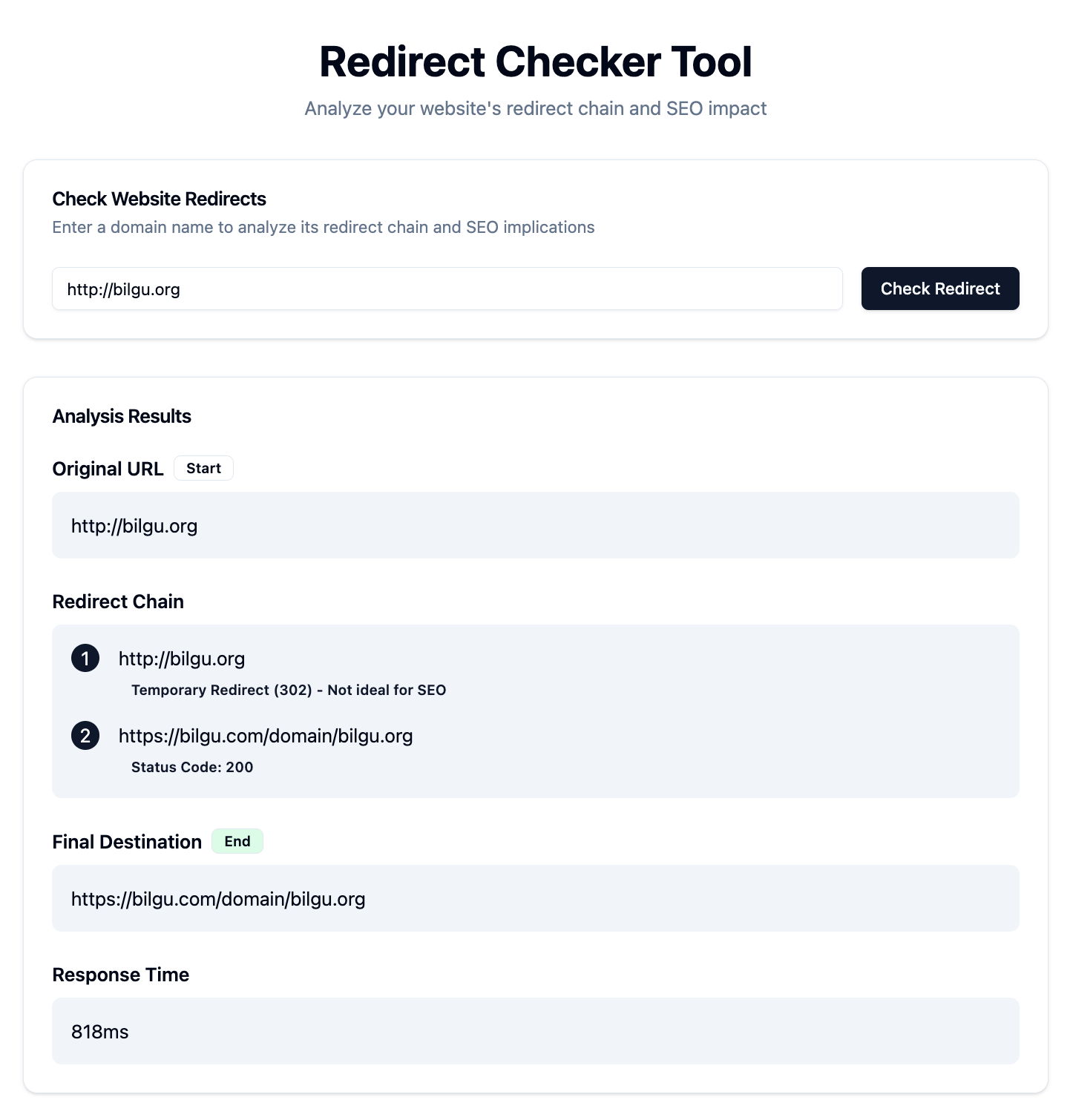Understanding Website Redirects: Your Complete Guide to 301 and 302 Redirects
Have you ever clicked on a link only to be automatically taken to a different webpage? That's a redirect in action.
In this comprehensive guide, we'll explore everything you need to know about website redirects, with a special focus on the two most common types: 301 and 302 redirects. Whether you're a website owner, developer, or just curious about how the web works, this guide will help you understand these essential technical tools in simple terms.
What Is a Website Redirect?
A website redirect is like a digital traffic sign that automatically guides visitors from one URL to another. Imagine you're driving to a store, but when you arrive, you find a sign saying "We've moved to a new location!" with directions to the new address. Website redirects work similarly in the digital world.
Why Are Redirects Important?
Redirects aren't just technical tools – they're essential for maintaining a healthy website. They help with:
* Maintaining a smooth user experience when web pages move or change
* Preserving search engine rankings during website changes
* Managing traffic during website maintenance or updates
* Tracking marketing campaigns and user behaviour
* Handling legacy URLs and ensuring old bookmarks still work
Understanding Different Types of Redirects
Let's dive into the two main types of redirects you'll encounter.
301 Redirect: The Permanent Move
A 301 redirect is like telling everyone, "We've permanently moved to a new address." It's the most common and SEO-friendly type of redirect.
Here's why it matters:
First, let's talk about SEO Benefits. A 301 redirect transfers 90-99% of the original page's search engine ranking power. It tells search engines to update their indexes with the new URL and preserves your website's hard-earned SEO value.
When should you use 301 redirects? Here are the common scenarios:
* Moving to a new domain permanently
* Changing your website's structure
* Combining multiple pages into one
* Switching from HTTP to HTTPS
* Merging multiple websites
Here's a real-world example: If you change your domain from "old-store.com" to "new-store.com," a 301 redirect ensures that anyone visiting the old domain automatically lands on your new website, while maintaining your search engine rankings.
302 Redirect: The Temporary Detour
A 302 redirect is like putting up a "Temporarily closed, please visit our other location" sign. It tells search engines and users that the move is not permanent.
Key characteristics of 302 redirects:
* It indicates a temporary change
* Doesn't pass SEO value to the new URL
* Keeps the original page indexed in search engines
When should you use 302 redirects? Here are the typical scenarios:
* During website maintenance
* A/B testing different page versions
* Geographic or language-based redirects
* Seasonal promotions or temporary campaigns
* Testing new page layouts or content
The Impact of Redirects on Website Performance
While redirects are useful, they can affect your website's performance. Let's break this down:
Speed Considerations
Page Load Time:
* Each redirect adds a small delay
* Multiple redirects (redirect chains) can significantly slow down your site
* Mobile users are particularly affected by redirect delays
Server Resources:
* Redirects require additional server processing
* Too many redirects can increase server load
* Proper implementation minimizes resource usage
Best Practices for Using Redirects
To get the most benefit from redirects while minimizing drawbacks, follow these best practices:
Choose the Right Type
* Use 301 for permanent changes
* Use 302 only for temporary situations
* Be consistent in your redirect strategy
Implement Correctly
* Avoid redirect chains
* Update internal links to point directly to new URLs
* Regularly audit your redirects
* Remove unnecessary redirects
Monitor Performance
* Track redirect impact on page load times
* Check for broken redirects
* Monitor SEO metrics after implementing redirects
The SEO Impact of Redirects
Understanding how redirects affect your search engine optimization is crucial:
Link Equity Transfer
* 301 redirects pass most link equity
* 302 redirects retain link equity with the original URL
* Multiple redirects can dilute link equity
Search Engine Crawling
* Redirects affect how search engines crawl your site
* Proper implementation helps maintain search rankings
* Too many redirects can waste crawl budget allocated to crawling bots like googlebot.
User Signals
* Redirect speed affects user experience
* Better user experience leads to better SEO
* Mobile performance is particularly important
How to Check Your Website's Redirects
Monitoring and analyzing your website's redirects is essential for maintaining optimal performance and SEO value. That's why we've developed a powerful Redirect Checker Tool to help website owners and developers track and analyze redirects effectively.
Our Redirect Checker Tool helps you:
* Analyze complete redirect chains
* Check redirect response times
* Identify SEO-impacting redirect issues
* Understand the type of redirects being used
* Monitor redirect performance
The tool is free to use and provides instant insights into your website's redirect configuration. Simply enter your URL, and the tool will:
* Track all redirects in the chain
* Show response times for each hop
* Identify the type of redirect (301, 302, etc.)
* Display the final destination URL
You can access the tool right now at https://bilgu.com/tools/redirect-check.
Conclusion
Understanding and properly implementing redirects is crucial for maintaining a healthy website. Whether you're moving to a new domain, restructuring your site, or managing temporary changes, choosing the right type of redirect and implementing it correctly can make a significant difference in your website's performance and search engine rankings.
Remember to regularly audit your redirects using tools like our Redirect Checker to ensure they're working as intended and not causing any performance issues. By following the best practices outlined in this guide and staying vigilant about your redirect implementation, you can maintain a smooth user experience while preserving your website's SEO value.



